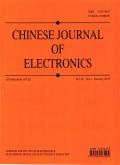Multi-Use Learning Instance for Optimized Image Retrieval
IF 3
4区 计算机科学
Q3 ENGINEERING, ELECTRICAL & ELECTRONIC
引用次数: 0
Abstract
Dear Editor, Retrieving target images accurately shows more and more prominent significance in the era of digital media and big data. Although there are many classic methods proposed, the overwhelming majority of them are still improved based on the strategy of machine learning. In recent years, deep learning models (such as convolutional neural networks [1]–[3], restricted Boltzmann machines [4], [5], autoencoders [6]–[8], and sparse coding [9], [10]) have used more complicated networks to extract essential features more completely. Moreover, the overwhelming advantages of experimental results support it to replace the traditional machine learning methods in a short while. On the basis of classic models, many innovative models [11], [12] have been proposed, demonstrating better practical application value. Although we must admit that deep learning models have provided revolutionary changes, the huge computing resource consumption is also a burden that can not be underestimated. Even if some methods can reduce the amount of learning instances relatively, they are at the cost of accuracy reduction in most cases, and even some models have obvious limitations which are only effective for some categories.优化图像检索的多用途学习实例
编辑先生,在数字媒体和大数据时代,准确检索目标图像的意义越来越突出。虽然提出了许多经典的方法,但绝大多数方法仍然是基于机器学习的策略进行改进的。近年来,深度学习模型(如卷积神经网络[1]-[3],受限玻尔兹曼机[4],[5],自动编码器[6]-[8],稀疏编码[9],[10])使用更复杂的网络来更完整地提取本质特征。而且,实验结果的压倒性优势支持它在短时间内取代传统的机器学习方法。在经典模型的基础上,提出了许多创新模型[11]、[12],显示出较好的实际应用价值。虽然我们必须承认深度学习模型提供了革命性的变化,但巨大的计算资源消耗也是一个不可低估的负担。即使有些方法可以相对减少学习实例的数量,但在大多数情况下,它们是以降低准确率为代价的,甚至有些模型有明显的局限性,只对某些类别有效。
本文章由计算机程序翻译,如有差异,请以英文原文为准。
求助全文
约1分钟内获得全文
求助全文
来源期刊

Chinese Journal of Electronics
工程技术-工程:电子与电气
CiteScore
3.70
自引率
16.70%
发文量
342
审稿时长
12.0 months
期刊介绍:
CJE focuses on the emerging fields of electronics, publishing innovative and transformative research papers. Most of the papers published in CJE are from universities and research institutes, presenting their innovative research results. Both theoretical and practical contributions are encouraged, and original research papers reporting novel solutions to the hot topics in electronics are strongly recommended.
 求助内容:
求助内容: 应助结果提醒方式:
应助结果提醒方式:


